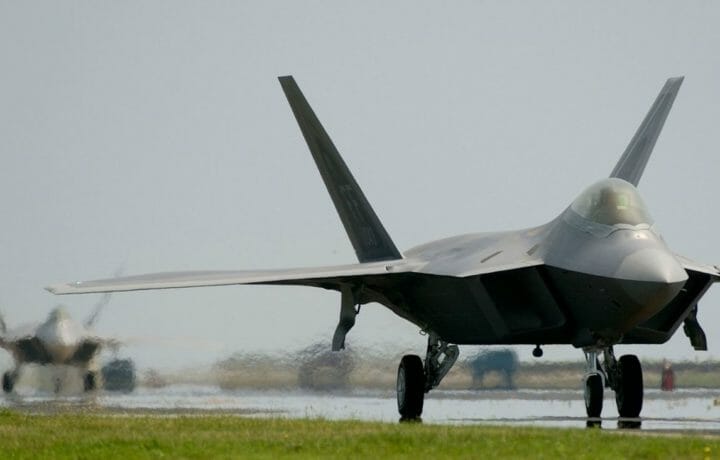Flight helmets have evolved considerably since the First World War when early aviators wore little more than leather caps – which were much about warmth as anything. Today’s modern flight helmets are a lot more high-tech, and these literally provide a plethora of data directly to the pilot’s eyes and ears.
The specialized flight helmets with the United States Air Force’s F-35 Lightning II are so advanced and specialized that each costs upwards of $400,000 and requires two days of special fittings for pilots.
Enter the Next Generation Fixed Wing Helmet
It was announced this month that the U.S. Air Force is testing its Next Generation Fixed Wing Helmet (NGFWH) with aviators at Eglin Air Force Base (AFB), Florida. According to the service, engineers with the 46th Test Squadron and the 28th Test and Evaluation Squadron are overseeing the helmet testing, which currently involves five F-22A Raptor pilots from the 301st Fighter Squadron, a Reserve unit with the 43rd Fighter Squadron at Eglin.
The pilots are conducting flights with new lighter, cooler, and more readily-equipped helmets – and the goal of the NGFWH program is to provide aircrews with a more comfortable, stable, and balanced platform to accommodate helmet-mounted devices usage without imposing neck strain and discomfort to the user.
“It is common knowledge fighter pilots have long-term neck and back issues,” said Maj. Brett Gedman, 301st FS pilot. “Therefore, having a lightweight helmet designed with the operator in mind will have positive long-term impacts on the health of our fighter pilots during and after service.”
Last July, the Air Force – through its Program Management Office – awarded LIFT Airborne Technologies, through its LIFT Aviation division, a contract to develop the new helmet. The project had begun in 2018 through an Air Force AFWERX program, which attracted proposals and insight from dozens of helmet makers and subject matter experts. The NGFWH is set to replace the more than the 40-year-old current model, known as HGU-55, used by all Air Force aircrew except F-35 Lightning II pilots.
Round Two of Testing
The current series of developmental tests being conducted at Elgin is actually the second round since LIFT Aviation was awarded the contract. Following each test flight with the NGFWH, pilots report any feedback they have about wearability, visibility, communication, etc. The engineers then compile that data and other feedback and provide it to the manufacturer.
The response from the aviators has generally been positive.
“The design of the helmet allows for unparalleled visibility, mobility and comfort in the cockpit,” Gedman added. “The increased visibility combined with the mobility it provides made it a massive improvement over what I am used to flying with. It is clear this has been a generational leap in technology that the fighter pilot deserves, which is long overdue.”
Such factors are considered critical when operating in a high-G within visual range environment.
“With near-peer threats narrowing the gap daily, it is critical the fighter pilots have every tactical advantage possible,” Gedman continued. “Details matter and it is coming down to the smallest details including the gear we wear.”
The NGFWH could also aid the aircrew flight equipment technicians who are responsible for preparing, equipping, and maintaining the helmets for the aircrew. Currently, many flight advancements are now standard on the new helmet including night-vision goggle mounts and an adjustable occipital basket. The legacy HGU-55 helmet required that those items are added manually, adjusted, and fitted to the aircrew.
That process could take hours to prepare.
As an example, to add an NVG mount to the legacy helmet, an AFE airman had to use power tools to drill into the helmet to secure the bracket. The new helmet is far more modular in design, and such items can be more readily swapped out.
More Tests Coming
The F-22 squadrons are now scheduled to depart Eglin AFB soon for Joint Base Langley-Eustis, Virginia. At that time, the test engineers will follow for new round of testing with new pilots.
Eventually, the tests will spread out to other aircraft and aircrew. According to the Air Force, the next aircraft type scheduled to test the helmets will be the HC-130J Combat King II, a modified KC-130J aircraft designed to conduct personnel recovery missions; and the Cold War-era B-1B Lancer long-range strategic bomber.




